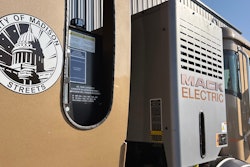Attending the recent SAE COMVEC student presentations in Chicago, I was thrilled at the students' enthusiasm and commitment to engineering principles.
The event confirmed my belief that universities focus engineering education on the expectation that the real world can be adequately understood through judicious application of physics and mathematics, working from appropriate data and engaging a sufficient amount of computer analysis.
Engineering students should leave school with their degree in one hand and a fervent belief that theory and testing will conveniently coincide, and computers will always confirm the results. That faith will be needed.
That belief system often gets taxed by the real world. Let's walk through an example.
Company A makes trucks. Their fleet customers expect those trucks to operate efficiently. They expect each succeeding model year’s vehicle will improve and be capable of greater efficiency, weigh less and cost less. The truck maker's management expects each new model year's trucks to earn more profit, be more desirable, and cost less to make.
Our newly graduated engineers will start their lifelong career designing trucks with the high expectation by both management and customer that new trucks will always do more, weigh less and cost less.
They will get asked, for example, to make a new, larger cab, which must weigh less than the old, smaller cab. The new engineer can innovate the cab design by using lighter materials and joining processes. But, those proposed materials must cost less than the existing ones in use for years.
Do more with less will be the directive.
The fact that the existing cab design has been refined over years by prior teams of experienced engineers to survive customer use while concurrently achieving annual cost reduction targets should not discourage the young engineer from finding a design solution.
Neither should the fact that suppliers are regularly encouraged by truck makers to reduce the cost of existing parts or risk not getting new business.
No one promised that truck engineering would be easy.
The young engineer will discover the shocking truth that lighter materials usually carry cost premiums. Aluminum is more expensive than steel. Carbon fiber is more expensive than aluminum.
That engineer will eventually overcome idealistic training that clearly teaches the more parts you make, the less each should cost.
The new engineer will find that production volumes of new truck models are measured in just thousands, sometimes just hundreds. Compounding this reality is that nearly every cab part will need to come in multiple permutations because customers have different and unique demands. Volume price breaks may be out of reach where automotive scale breaks may start in the tens of thousands, hundreds of thousands and millions parts per year ranges.
The new engineer will be asked to make parts better by using better tooling. Better tooling, time will show, also means more expensive tooling. The cost of that better tooling has to be amortized over production volume.
The new parts will also need to be serviceable in the field. Repairs will need to be made efficiently. Designs need to be made up of parts and at the same time, the part count needs to be minimized so the factory installers building the truck can reduce labor cost.
The new engineer may find out that the standard 40-hour work week is great for planning purposes, but doesn't work at all for getting things done.
The new engineer will find that physical testing in real-world conditions by real customers causes failures analysts never contemplated as possible or predicted.
The new engineer will come to understand that management people and customers often change their minds about what they want, and those changes can happen anytime irrespective of how much time and money has been invested to that point or what deadlines are looming.
The new engineer will conclude that truck engineering is about conflicting and often shifting requirements. A lot of them.
The new engineer's faith in the expensive university education will be tested, as will their faith that all problems have solutions and the belief that applying physics and math can make anything possible.
Time will provide experience. Experience will temper expectations and hone skills. The new engineer will become a sage, older, capable engineer able to face seemingly daily Star Trek Kobayashi Maru tests; the no win scenarios of truck engineering.
My advice is to keep the faith. The solutions are out there. You will find them. Either with or in spite of your university schooling. You are in the school of the real-world now. Logic and reason do not always apply. And somehow things get done.
Never lose sight that you became an engineer to make the impossible possible.
It's an amazing rush when you pull it off.














